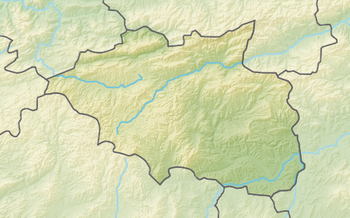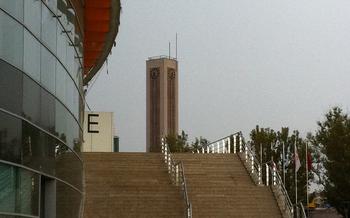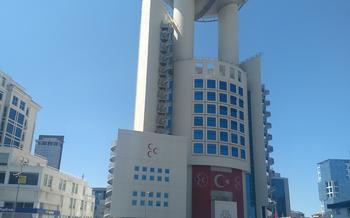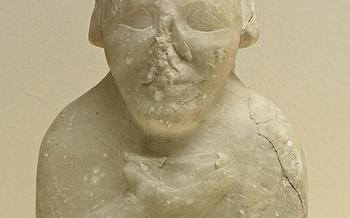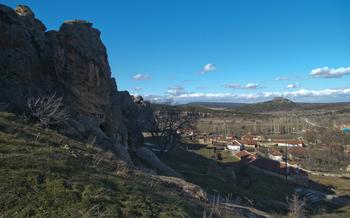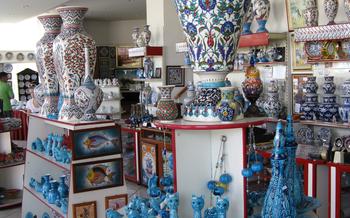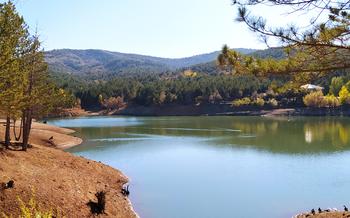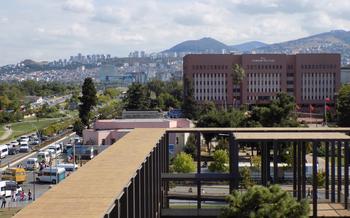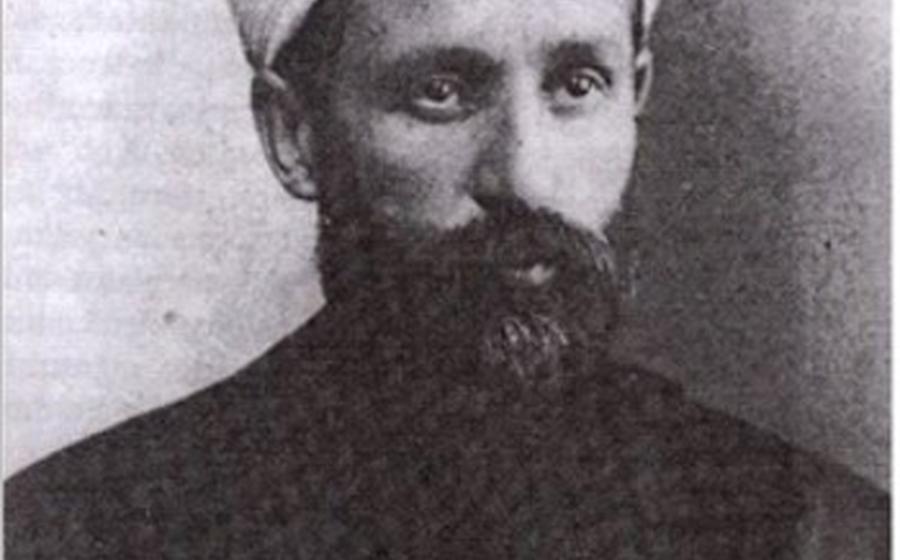
Sorgun Yazılıkaya Frig Vadisi (Sorgun Yazılıkaya Phrygian Valley)
- Sorgun Yazılıkaya Phrygian Valley: A Hidden Gem in Turkey
- Exploring the Valley's Ancient History
- Marveling at the Sorgun Yazılıkaya Monument
- Visiting the Yazılıkaya Necropolis
- Hiking Through the Valley's Natural Beauty
- Unveiling the Secrets of the Yazılıkaya Inscriptions
- Experiencing Local Culture and Traditions
- Visiting Nearby Historical Sites
- Tips for Planning Your Visit
- Photography Opportunities
- Accommodation Options
- Getting Around
- Responsible Tourism
Sorgun Yazılıkaya Phrygian Valley: A Hidden Gem in Turkey
Sorgun Yazılıkaya Phrygian Valley, nestled in the heart of Turkey's Yozgat province, is an archaeological marvel that transports visitors back to the ancient world of the Phrygians. This valley, with its captivating rock-cut monuments, inscriptions, and stunning natural beauty, offers a unique glimpse into a civilization that flourished in Anatolia centuries ago.
History and Significance: The Phrygians, an Indo-European people, established their kingdom in central Anatolia around the 12th century BC. Sorgun Yazılıkaya Phrygian Valley served as a significant religious and cultural center for the Phrygians. The valley's numerous rock-cut monuments and inscriptions provide valuable insights into their beliefs, traditions, and artistic expressions.
Location and Accessibility: Located approximately 100 kilometers northeast of Yozgat city, Sorgun Yazılıkaya Phrygian Valley is easily accessible by road. Visitors can take a scenic drive through the picturesque countryside, passing charming villages and rolling hills.
Best Time to Visit: The valley is open to visitors year-round, but the best time to experience its beauty is during the spring and autumn months, when the weather is pleasant for outdoor exploration. Summer temperatures can be hot and dry, while winters can be cold and snowy.
Fees and Permits: There is a small entrance fee required to visit the Sorgun Yazılıkaya Phrygian Valley. This fee helps support the conservation and maintenance of the site. Visitors should also obtain a permit from the local authorities before exploring the valley.
Exploring the Valley's Ancient History
The Sorgun Yazılıkaya Phrygian Valley holds immense historical significance as the heartland of the Phrygian civilization, an ancient kingdom that flourished in central Anatolia during the 1st millennium BC. The Phrygians, known for their advanced metalworking skills and elaborate rock-cut monuments, left an indelible mark on the region.
Venturing into the valley, visitors are greeted by a captivating collection of rock-cut monuments and inscriptions, remnants of Phrygian artistry and craftsmanship. These monuments, carved into the sheer cliffs and rock formations, showcase a blend of religious, cultural, and historical themes. From intricate reliefs depicting mythological scenes to enigmatic inscriptions in the Phrygian language, the valley reveals a rich tapestry of Phrygian civilization.
Discover the significance of the valley in Phrygian history and culture, uncovering the stories and legends that shaped this ancient kingdom. Unravel the mysteries of the Phrygian gods and goddesses, their beliefs and practices, as you explore the valley's sacred spaces. Delve into the myths and legends associated with the Sorgun Yazılıkaya Monument, a colossal rock-cut structure that has fascinated scholars and visitors alike for centuries.
Marveling at the Sorgun Yazılıkaya Monument
At the heart of the Sorgun Yazılıkaya Phrygian Valley, the monumental Sorgun Yazılıkaya stands as a testament to the artistry and ingenuity of the ancient Phrygians. This colossal rock-cut monument, towering over the valley, commands attention with its sheer size and intricate carvings.
Measuring an impressive 15 meters in height and 18 meters in width, the Sorgun Yazılıkaya is a marvel of engineering. Its façade is adorned with breathtaking reliefs, each meticulously carved into the rock surface, depicting a variety of scenes and subjects. From processions of deities and mythical creatures to intricate geometric patterns, the carvings offer a glimpse into the rich symbolism and cultural beliefs of the Phrygians.
One of the most striking features of the monument is the central panel, which showcases a procession of Phrygian gods and goddesses. The figures are depicted in elaborate costumes and headdresses, each holding symbolic objects or attributes. Among them, the Phrygian mother goddess, Cybele, is easily recognizable with her distinctive headdress and the presence of lions at her feet.
The Sorgun Yazılıkaya's carvings extend beyond the central panel, covering the entire façade of the monument. They depict scenes of hunting, feasting, and religious rituals, providing valuable insights into the daily life and practices of the Phrygians. The intricate details and symbolism embedded in these carvings have captivated scholars and historians, offering clues to understanding the complex mythology and religious beliefs of this ancient civilization.
Theories abound regarding the purpose of the Sorgun Yazılıkaya monument. Some believe it served as a sacred sanctuary or temple, where religious ceremonies and rituals were performed. Others suggest it was a royal monument, commemorating the achievements of a powerful Phrygian ruler. Regardless of its exact function, the Sorgun Yazılıkaya stands as a testament to the artistic prowess and cultural significance of the Phrygian civilization.
Visiting the Yazılıkaya Necropolis
The Yazılıkaya Necropolis, located within the Sorgun Yazılıkaya Phrygian Valley, offers a glimpse into the burial customs and beliefs of the ancient Phrygians. Scattered across the valley's slopes, this vast necropolis encompasses a diverse range of burial structures, including rock-cut tombs, tumuli, and chamber tombs.
The rock-cut tombs, carved into the valley's soft tufa rock, showcase the Phrygians' mastery of stoneworking. These tombs feature intricate facades adorned with various motifs, including geometric patterns, animal figures, and human representations. Inside, the tombs reveal burial chambers with niches for the deceased and offerings.
The tumuli, or burial mounds, are another prominent feature of the necropolis. These earthen mounds, often surrounded by stone circles or retaining walls, were constructed over underground burial chambers. Excavations at the site have uncovered a wealth of artifacts, including pottery, jewelry, and metalwork, providing valuable insights into Phrygian burial practices and the material culture of the period.
Chamber tombs, with their multiple chambers and elaborate architectural features, were reserved for high-ranking individuals or families. These tombs often feature impressive facades and intricate carvings, reflecting the status and wealth of their occupants.
Exploring the Yazılıkaya Necropolis is a fascinating journey into the past, offering a unique opportunity to learn about Phrygian funerary customs and beliefs. The diversity of burial structures, the riqueza of artifacts unearthed, and the serene atmosphere of the valley create a truly immersive experience for visitors.
Hiking Through the Valley's Natural Beauty
Sorgun Yazılıkaya Phrygian Valley boasts a network of well-maintained hiking trails that cater to hikers of all levels. Whether you prefer leisurely strolls or challenging treks, the valley offers a diverse range of routes to explore. As you embark on your hike, prepare to be captivated by the valley's stunning scenery. Panoramic views of the valley unfold at every turn, showcasing its unique geological formations and lush vegetation.
The valley is home to a rich diversity of flora and fauna. Keep an eye out for unique plant species, including endemic wildflowers and rare orchids. The valley is also a haven for birdwatchers, with a variety of bird species soaring through the skies. If you're lucky, you might even spot a majestic eagle or a colorful woodpecker.
Along the trails, you'll encounter various natural attractions, including cascading waterfalls, serene streams, and hidden caves. Take breaks to soak in the tranquility of the surroundings and capture the beauty of nature with your camera. Whether you're hiking alone or with friends, the Sorgun Yazılıkaya Phrygian Valley promises an unforgettable hiking experience.
Unveiling the Secrets of the Yazılıkaya Inscriptions
The Sorgun Yazılıkaya Valley is home to a treasure trove of ancient inscriptions that provide valuable insights into the Phrygian civilization. These inscriptions, carved into the rock faces and monuments, are a testament to the rich cultural and intellectual heritage of the Phrygians.
The inscriptions are written in a variety of scripts, including the Phrygian alphabet, which was deciphered in the 19th century. The content of the inscriptions ranges from historical records and religious texts to personal dedications and epitaphs.
One of the most significant inscriptions is the "Sorgun Stele," which narrates the history of the Phrygian kingdom and its rulers. The stele also provides insights into the Phrygian language and culture, as well as their interactions with neighboring civilizations.
Another notable inscription is the "Yazılıkaya Inscription," which is a religious text dedicated to the Phrygian goddess Cybele. The inscription describes the goddess's attributes, her role in the Phrygian pantheon, and the rituals associated with her worship.
Ongoing research and efforts are underway to decipher and understand the Phrygian writing system more fully. Scholars from around the world are collaborating to translate and interpret the inscriptions, shedding new light on the history and culture of this ancient civilization.
Experiencing Local Culture and Traditions
Immerse yourself in the vibrant local culture of Sorgun and its neighboring villages. Engage with the friendly residents, who are eager to share their traditions and customs. Learn about the art of carpet weaving, a skill passed down through generations. Witness the creation of intricate patterns and designs, each telling a unique story. Discover the secrets of pottery making, a craft that has flourished in this region for centuries. Observe skilled artisans as they shape clay into beautiful and functional objects.
Savor the flavors of authentic Turkish cuisine, a blend of diverse culinary influences. Indulge in keşkek, a hearty dish made from wheat, meat, and spices, a specialty of the region. Sample gözleme, a traditional flatbread filled with savory ingredients like cheese, spinach, or minced meat. Delight in the aroma and taste of freshly brewed Turkish coffee, a beloved beverage deeply rooted in the local culture. Satisfy your sweet tooth with lokum, also known as Turkish delight, a confection made from sugar, starch, and flavored with rose water or other essences.
Participate in cultural events and festivals that celebrate Phrygian heritage. Experience the rhythm of traditional music and dance, performed by local artists who keep these ancient traditions alive. Immerse yourself in the vibrant atmosphere of these gatherings, where locals and visitors come together to honor their shared history and culture.
Visiting Nearby Historical Sites
The Sorgun Yazılıkaya Phrygian Valley is a treasure trove of ancient history, but it's not the only one in the region. Take some time to explore the surrounding area and discover other fascinating historical sites that shed light on the rich Phrygian heritage.
One must-visit destination is the ancient city of Gordion, once the capital of Phrygia. Located just a short drive from Sorgun, Gordion boasts impressive ruins, including the remnants of its ancient citadel, city walls, and temples. Explore the site's museum to learn about the city's history and admire artifacts unearthed during excavations.
Another highlight is the Midas Mound, a legendary burial place attributed to King Midas, the wealthy ruler of Phrygia. Situated near the village of Gordion, this massive tumulus is an impressive sight. Although it has not been excavated, its size and location suggest that it may hold significant archaeological treasures.
Beyond these iconic sites, there are numerous other Phrygian settlements and ruins scattered throughout the region. Embark on a journey of discovery and uncover hidden gems such as the rock-cut tombs of Midas City, the temple complex of Yazılıkaya, and the Phrygian fortress of Pessinus. Each site offers a glimpse into the diverse and captivating world of the Phrygian civilization.
Exploring these nearby historical sites will provide a deeper understanding of the Phrygian kingdom, its culture, and its enduring legacy. Immerse yourself in the region's rich past and create a comprehensive picture of Phrygian civilization.
Tips for Planning Your Visit
Before embarking on your journey to the Sorgun Yazılıkaya Phrygian Valley, it's essential to plan ahead to make the most of your experience. Here are some practical tips to help you plan a successful trip:
- Visa Requirements: Most nationalities do not require a visa for short-term stays in Turkey. However, it's advisable to check the latest visa regulations with your country's embassy or consulate before traveling.
- Currency Exchange: The official currency of Turkey is the Turkish lira (TL). You can exchange your currency at banks, exchange bureaus, or ATMs upon arrival.
- Accommodation: There are several accommodation options near the valley, ranging from budget-friendly guesthouses to comfortable hotels. Book your stay in advance, especially during peak season, to secure the best deals.
- Packing Essentials: Pack comfortable shoes for hiking, as well as layers of clothing suitable for the weather conditions. Don't forget your camera, sunscreen, and a hat to protect yourself from the sun.
- Safety Considerations: The Sorgun Yazılıkaya Phrygian Valley is generally safe for travelers. However, it's always advisable to take precautions, such as being aware of your surroundings and avoiding isolated areas at night.
Photography Opportunities
Sorgun Yazılıkaya Phrygian Valley is a paradise for photography enthusiasts. The valley's scenic landscapes, towering rock formations, and intricate carvings provide a wealth of subjects to capture. Whether you're a professional photographer or simply enjoy taking snapshots, you'll find plenty of opportunities to create stunning images.
Be sure to capture the valley's panoramic views from various vantage points. The best time for photography is early morning or late afternoon, when the light is soft and golden, casting a warm glow on the valley and its monuments.
Don't miss the chance to photograph the intricate carvings and inscriptions that adorn the rocks. These ancient artworks depict a variety of scenes, including gods, goddesses, animals, and mythical creatures. Take your time to explore the valley and discover hidden carvings that might easily be missed.
Remember to bring a tripod to stabilize your camera for sharp shots, especially when photographing in low-light conditions. A wide-angle lens is also useful for capturing the vastness of the valley and its monuments.
By following these tips, you'll be able to capture the beauty and essence of Sorgun Yazılıkaya Phrygian Valley through your lens. Your photographs will serve as lasting memories of your journey into this ancient and captivating land.
Accommodation Options
When planning your trip to the Sorgun Yazılıkaya Phrygian Valley, choosing the right accommodation is essential for a comfortable and enjoyable stay. Fortunately, there are various options available near the valley, catering to different budgets and preferences.
For budget-conscious travelers, guesthouses and hostels offer basic but clean and affordable accommodations. These establishments typically provide shared rooms and common areas, allowing you to meet fellow travelers and save money.
If you prefer a more private and comfortable experience, consider staying at one of the charming hotels or pensions in the area. These establishments offer a range of amenities, including private rooms, en-suite bathrooms, and sometimes even balconies with stunning valley views.
To find the best deals and book your stay, it's recommended to use online booking platforms or contact the accommodation directly. Be sure to read reviews and compare prices to find the option that suits your needs and budget.
Once you've chosen your accommodation, consider creating a personalized itinerary based on your interests and time constraints. Whether you prefer hiking, exploring ancient ruins, or immersing yourself in local culture, there's something for everyone in the Sorgun Yazılıkaya Phrygian Valley.
Getting Around
Transportation options for reaching Sorgun and the valley
Sorgun Yazılıkaya Frig Vadisi is conveniently accessible by various transportation means. If you're traveling from major cities like Ankara or Istanbul, you can take a direct bus or train to Sorgun. The journey by bus typically takes around 6-8 hours, while the train ride is slightly longer at 8-10 hours. Once in Sorgun, local buses or taxis can take you to the valley's entrance, which is about 15 kilometers from the town center.
Renting a car or hiring a taxi for exploring the surrounding area
For a more flexible and independent mode of transportation, consider renting a car. This option allows you to explore the valley at your own pace and venture beyond the main tourist attractions. Several car rental agencies operate in Sorgun, offering a range of vehicles to suit different budgets and needs. If you prefer not to drive, you can hire a taxi or private transfer service for day trips to the valley or nearby historical sites.
Public transportation options and schedules
Public transportation is a budget-friendly option for getting around Sorgun and the surrounding area. Local buses run regularly between Sorgun and the valley, with fares starting from a few Turkish liras. However, the frequency of buses may be limited, especially during off-season periods. It's advisable to check the bus schedules in advance and plan your journey accordingly.
Tips for navigating the local transportation system
To navigate the local transportation system smoothly, it's helpful to have a basic understanding of Turkish phrases related to directions and destinations. You can also utilize mobile apps like Google Maps or Yandex Navigasyon for real-time bus schedules and route planning. Additionally, don't hesitate to ask for assistance from locals or hotel staff if you're unsure about bus stops or routes.
Responsible Tourism
As you explore the Sorgun Yazılıkaya Phrygian Valley, it is essential to practice responsible tourism. Minimize your environmental impact by avoiding single-use plastics and properly disposing of waste. Respect local customs and traditions by dressing modestly and behaving respectfully. Support sustainable tourism initiatives by choosing local guides and operators committed to preserving the valley's heritage. Encourage fellow visitors to adopt responsible practices, ensuring the valley's beauty and cultural significance are preserved for future generations.
